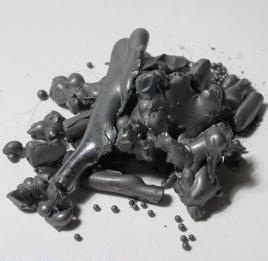The new element of solar
 New research published by the Lawrence Berkeley National Laboratory of Berkeley shows that adding selenium to photovoltaics (PV) can vastly increase their ability to absorb sunlight and could help make PV much less expensive. The findings of the lab’s Solar Materials Energy Research Group was published in the journal Applied Physics Letters.
New research published by the Lawrence Berkeley National Laboratory of Berkeley shows that adding selenium to photovoltaics (PV) can vastly increase their ability to absorb sunlight and could help make PV much less expensive. The findings of the lab’s Solar Materials Energy Research Group was published in the journal Applied Physics Letters.
According to principal author Marie Mayer, a doctoral student at the University of California, Berkeley, "Researchers are exploring ways to make solar cells both less expensive and more efficient; this result potentially addresses both of those needs." The article explained that researchers added selenium to zinc oxide and found that even in concentrations as low as 9 percent, the selenium dramatically increased the material’s ability to absorb sunlight.
Selenium is a semiconducting element used in photographic printing and in toner. It’s also a nutrient essential, in small quantities, to cell function.
Zinc oxide is an inexpensive inorganic compound found in many household items, including sun block. The material also has semiconducting properties and is prized in that capacity for its ability to conduct electricity in a wide bandgap. The material also has been used to make transparent electrodes for liquid crystal displays and energy efficient windows. Adding or doping zinc oxide with just low quantities of selenium allowed it to act as a sunlight absorbing material.
The research suggested that adding selenium to other oxide materials could also increase their sunlight absorbing properties, making a variety of PV-conducting materials much more efficient and cost-effective.
While selenium could be added to PV materials to help make them more efficient, Mayer said that an exciting potential application of selenium in the world of solar is using it in for photoelectrochemical water splitting applications. Water splitting involves using electricity to break water into its constituent elements, hydrogen and water.
Hydrogen has been looked at as an alternative to gas for zero-emission vehicles. However, at this point, converting water into hydrogen has remained prohibitively expensive.
Few are predicting that the majority of vehicles will be hydrogen-powered anytime soon, but Mayer said the great thing about solar power, is that "if you can dream it, someone is trying to research it."



